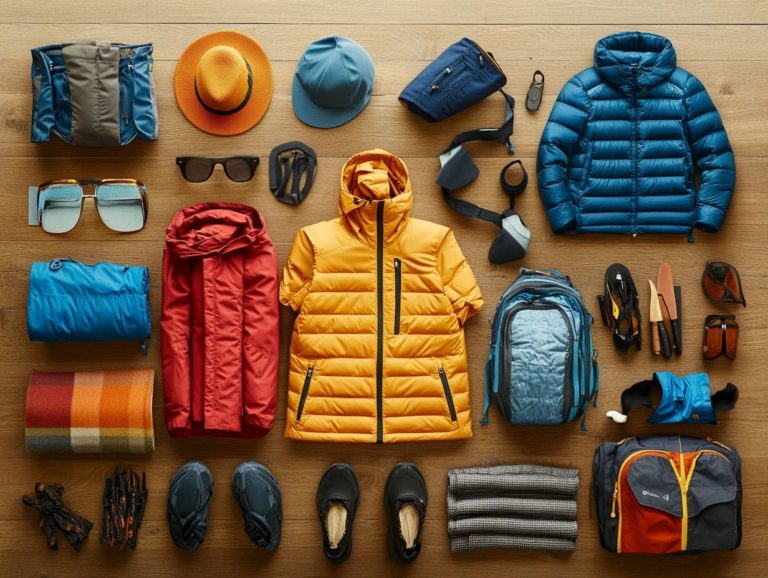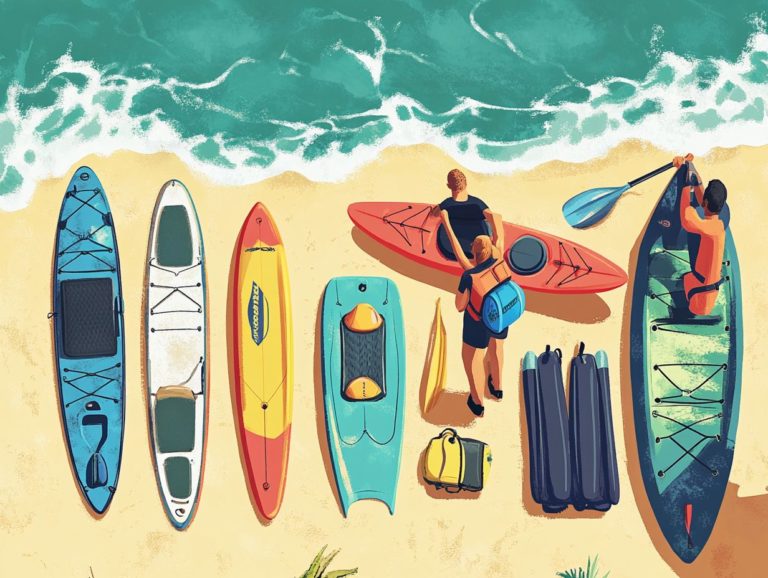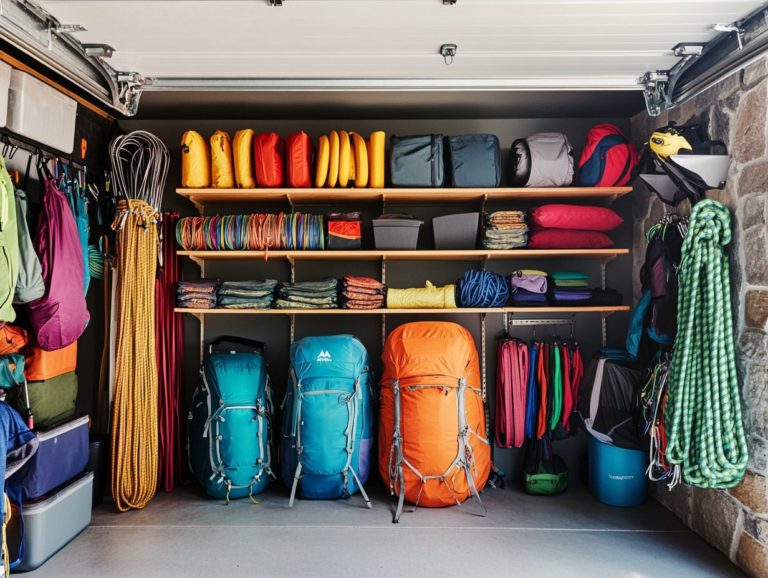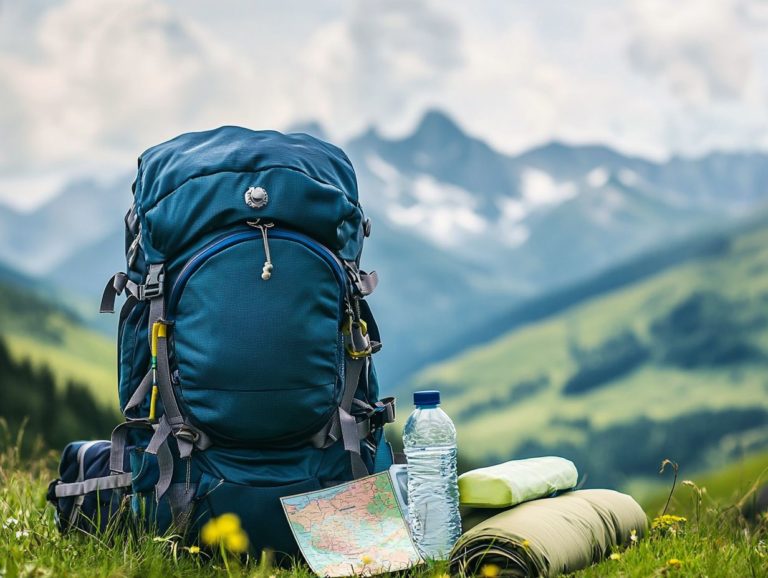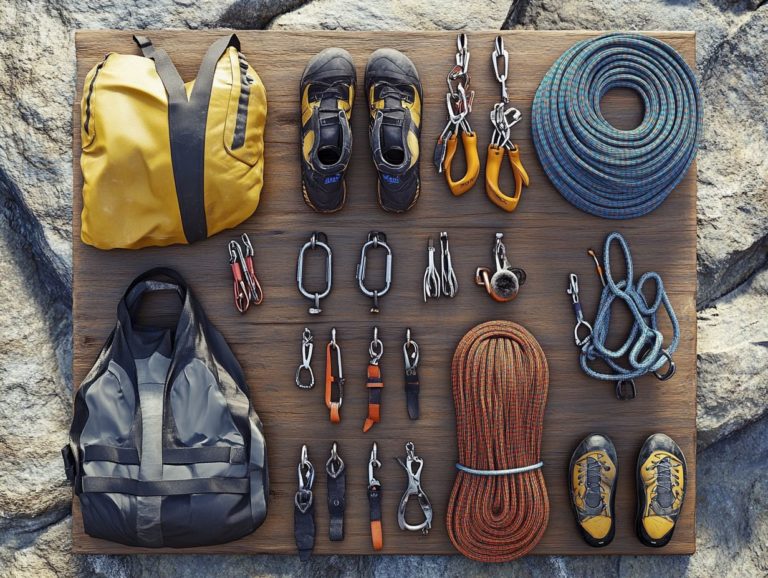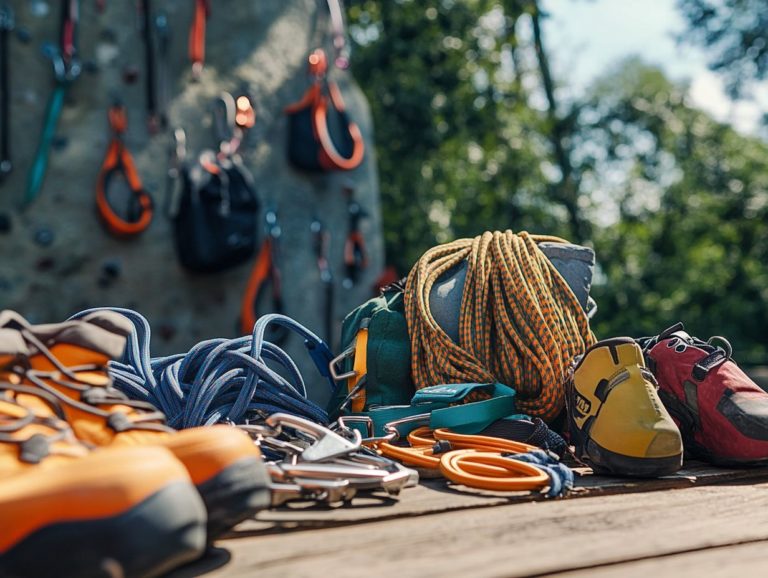How to Use a First Aid Kit During Outdoor Activities?
When you venture into the great outdoors, safety must always be at the forefront of your mind. A first aid kit is a must-have for every adventure!
Whether you re hiking, camping, or diving into any thrilling adventure, having a well-equipped first aid kit can be a game-changer in emergencies. This guide will walk you through essential items to include in your kit, how to use it effectively in various situations, and tips for keeping it in peak condition.
We ll also explore other vital safety measures to ensure your outdoor experiences are enjoyable and secure.
Contents
- Key Takeaways:
- Importance of First Aid Kits for Outdoor Activities
- Essential Items to Include in a First Aid Kit
- How to Use a First Aid Kit in Different Scenarios
- Maintaining and Restocking Your First Aid Kit
- Other Safety Measures for Outdoor Activities
- Frequently Asked Questions
- What is a first aid kit and why is it important to have during outdoor activities?
- What are some essential items that should be included in a first aid kit for outdoor activities?
- How should the first aid kit be organized and stored during outdoor activities?
- What are some common injuries that can occur during outdoor activities and how can a first aid kit help?
- How often should a first aid kit be checked and restocked?
- What are some tips for using a first aid kit during outdoor activities?
Key Takeaways:
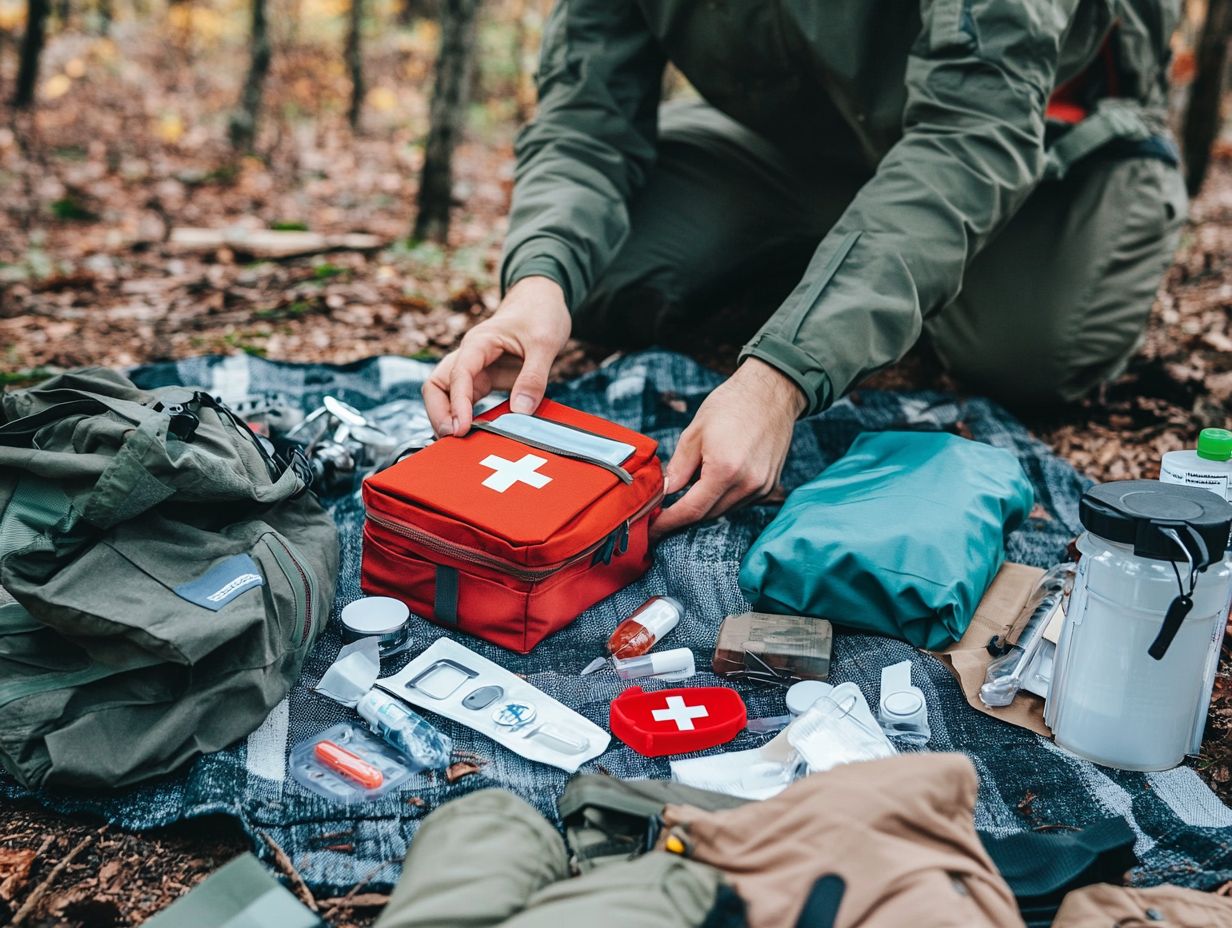
- Always carry a first aid kit during outdoor activities, as it can save lives and prevent further injuries.
- Ensure your first aid kit includes basic supplies like bandages, antiseptic wipes, and medications, as well as special considerations like snake bite kits or bee sting relief.
- Know how to use your first aid kit in different scenarios, such as treating injuries and emergencies outdoors, to ensure quick and effective aid.
Importance of First Aid Kits for Outdoor Activities
In the world of outdoor adventures, you can’t underestimate the importance of carrying a well-equipped first aid kit. Immediate access to first aid supplies is crucial for your safety and preparedness.
A comprehensive first aid kit serves as your essential tool, equipping you with the items needed to tackle common outdoor injuries like cuts, scrapes, and insect bites. For every outdoor enthusiast, it s a critical companion.
First aid training enhances the value of your kit, particularly in remote areas where emergency services may take their time to arrive. Knowing how to respond effectively can significantly improve outcomes when accidents occur.
Why Every Outdoor Enthusiast Should Carry One
Every outdoor enthusiast, whether you’re a seasoned hiker or a casual adventurer, should consider a first aid kit a critical part of your safety gear. Outdoor activities come with risks, and being prepared for potential injuries like sprains, cuts, or allergic reactions can truly make a difference in emergencies.
The unpredictable nature of the wilderness can lead to a range of injuries, from fractures due to falls to insect bites that might trigger severe allergic reactions. You could even face exposure-related challenges like hypothermia (a dangerous drop in body temperature) or heat exhaustion (overheating that can cause serious health issues).
While a well-stocked first aid kit is crucial, possessing wilderness first aid knowledge is equally important. Understanding how to administer basic care can bridge the gap until professional medical assistance is available, enhancing your overall outdoor experience.
Essential Items to Include in a First Aid Kit
Crafting a comprehensive first aid kit requires careful attention to essential items that address a range of injuries and medical emergencies. As you assemble your supplies, it s vital to include items like bandages, antiseptics, and key medications such as Acetaminophen, Ibuprofen, and Benadryl. These are critical for treating common ailments and injuries you might encounter during your outdoor adventures.
Don’t forget to check your first aid kit regularly and ensure it is well-stocked!
Ready for adventure? Make sure your first aid kit is packed with essentials!
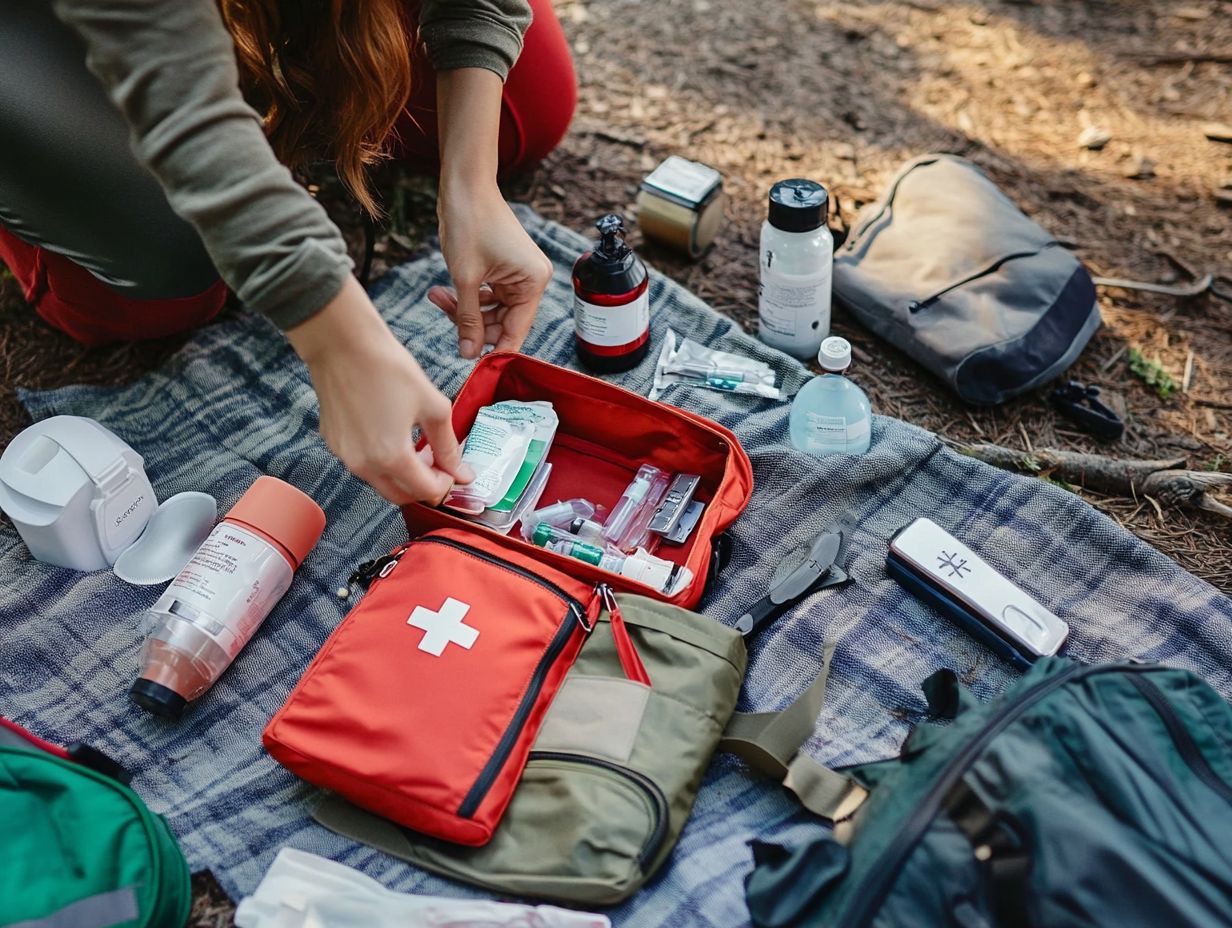
When putting together your first aid kit, it’s crucial to include versatile supplies capable of addressing a variety of outdoor injuries and health concerns. Beyond the standard bandages and antiseptics, think about adding specific items for unique scenarios, such as treatments for diarrhoeal illness or a method to prioritize patients based on the severity of their condition for emergency situations.
In addition to these essentials, specialized tools like snake bite kits or splints can significantly enhance your preparedness, particularly in remote wilderness areas. Imagine you’re out on a hiking adventure and unexpectedly encounter wildlife; having a snake bite kit on hand could make all the difference. If you experience a severe allergic reaction from an insect bite, antihistamines and an EpiPen become absolutely vital.
A well-rounded first aid kit doesn t just equip you to handle common injuries; it also prepares you for those rare, yet potentially life-threatening situations that could arise in the great outdoors.
How to Use a First Aid Kit in Different Scenarios
Understanding how to effectively utilize a first aid kit in diverse scenarios is crucial for any outdoor enthusiast like yourself. Whether you encounter minor scrapes and bruises or more serious outdoor injuries, promptly applying first aid techniques can significantly alleviate the situation while you await the arrival of emergency services.
Injuries and Emergencies in the Outdoors
Injuries and emergencies in outdoor environments can span the spectrum from minor mishaps to life-threatening crises demanding immediate intervention. It’s essential for you to understand the various types of outdoor injuries think snake bites, heat-related illnesses like low sodium levels (this can happen after excessive sweating), and other urgent situations to ensure your safety during any wilderness adventure.
Recognizing symptoms such as swelling, dizziness, or confusion can dramatically influence survival outcomes. For example, if someone is suffering from a heat-related illness, your immediate response should involve cooling them down and ensuring they stay hydrated. In the case of a snake bite, it’s crucial to immobilize the affected area and seek medical assistance without delay.
Wilderness first aid training is valuable; it equips you with the necessary skills to handle these situations effectively. When paired with a well-stocked first aid kit, this knowledge becomes a true lifesaver, enabling you to respond quickly and thoughtfully, which can significantly reduce complications in times of crisis.
Maintaining and Restocking Your First Aid Kit
Maintaining and restocking your first aid kit is essential for ensuring its effectiveness on your outdoor adventures. Regularly reviewing your first aid essentials and confirming that all supplies are in optimal condition and not expired is vital, particularly as you prepare for any upcoming trips. This proactive approach guarantees that you re fully equipped to handle any unexpected situations that may arise in the great outdoors.
Tips for Keeping Your Kit Up-to-Date and Ready for Use
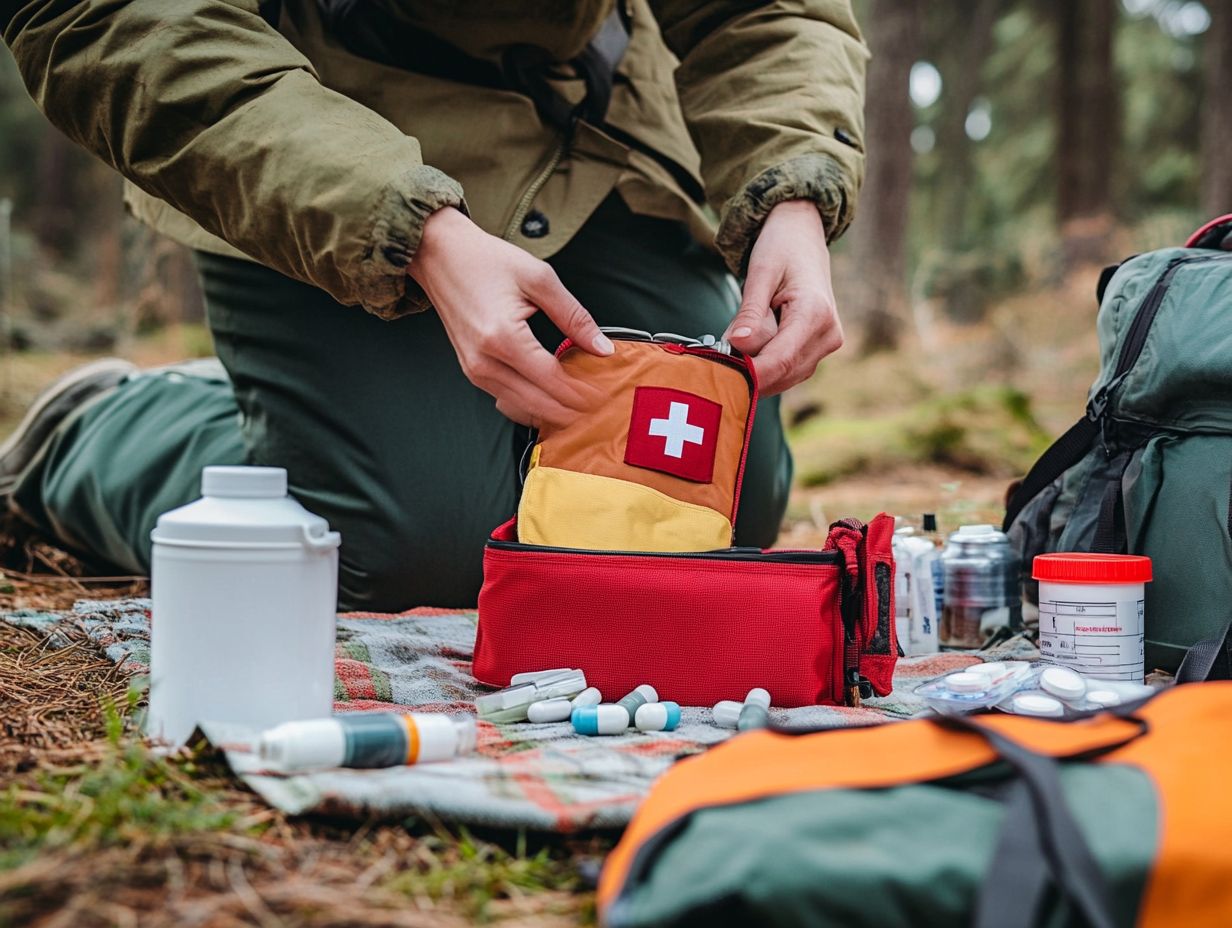
Keeping your first aid kit up-to-date is crucial for ensuring your outdoor safety and preparedness for any situation that may arise. Regularly checking your kit to replace used or expired essentials, as well as evaluating the relevance of items based on your evolving outdoor activities, will help you maintain a functional and effective first aid kit.
To streamline this process, consider creating a checklist of necessary items, including bandages, antiseptic wipes, pain relievers, and specialized equipment tailored to activities like hiking or camping. Assessing the contents of your kit every three to six months not only allows you to replace expired medicines but also helps you identify if additional items are needed, such as insect repellent for summer adventures or thermal blankets for those chillier outings.
By tailoring your supplies to match your planned activities, you ensure that your kit is equipped to meet all potential needs, enhancing your safety and confidence in any environment.
Other Safety Measures for Outdoor Activities
In addition to carrying a first aid kit, you should implement a range of safety measures to ensure a secure outdoor experience. Your outdoor safety can be significantly enhanced through careful planning, the use of appropriate safety gear, and undergoing first aid training.
These steps not only prepare you for various emergencies but also equip you with the essential knowledge to act decisively in critical situations.
Preventive Measures and Emergency Protocols
Implementing preventive measures is crucial for outdoor safety. It significantly minimizes the risk of injuries during your adventures. By being aware of potential outdoor hazards, equipping yourself with the right safety gear, and establishing clear emergency protocols, you can greatly enhance your preparedness and ability to respond effectively in a crisis.
Before you set out, ensure you’re equipped with a first aid kit tailored to your specific activities. It should contain the essentials adhesive bandages, antiseptic wipes, and any necessary medications. Familiarize yourself with the terrain and weather conditions. Share your plans with someone who will be off the grid.
As you embark on your outdoor activities, remember that staying hydrated and maintaining your energy levels is vital. Keeping a whistle or signal device handy can be a lifesaver in emergencies. Establish a straightforward communication plan to save valuable time and enhance your safety if unexpected situations arise.
Frequently Asked Questions
What is a first aid kit and why is it important to have during outdoor activities?
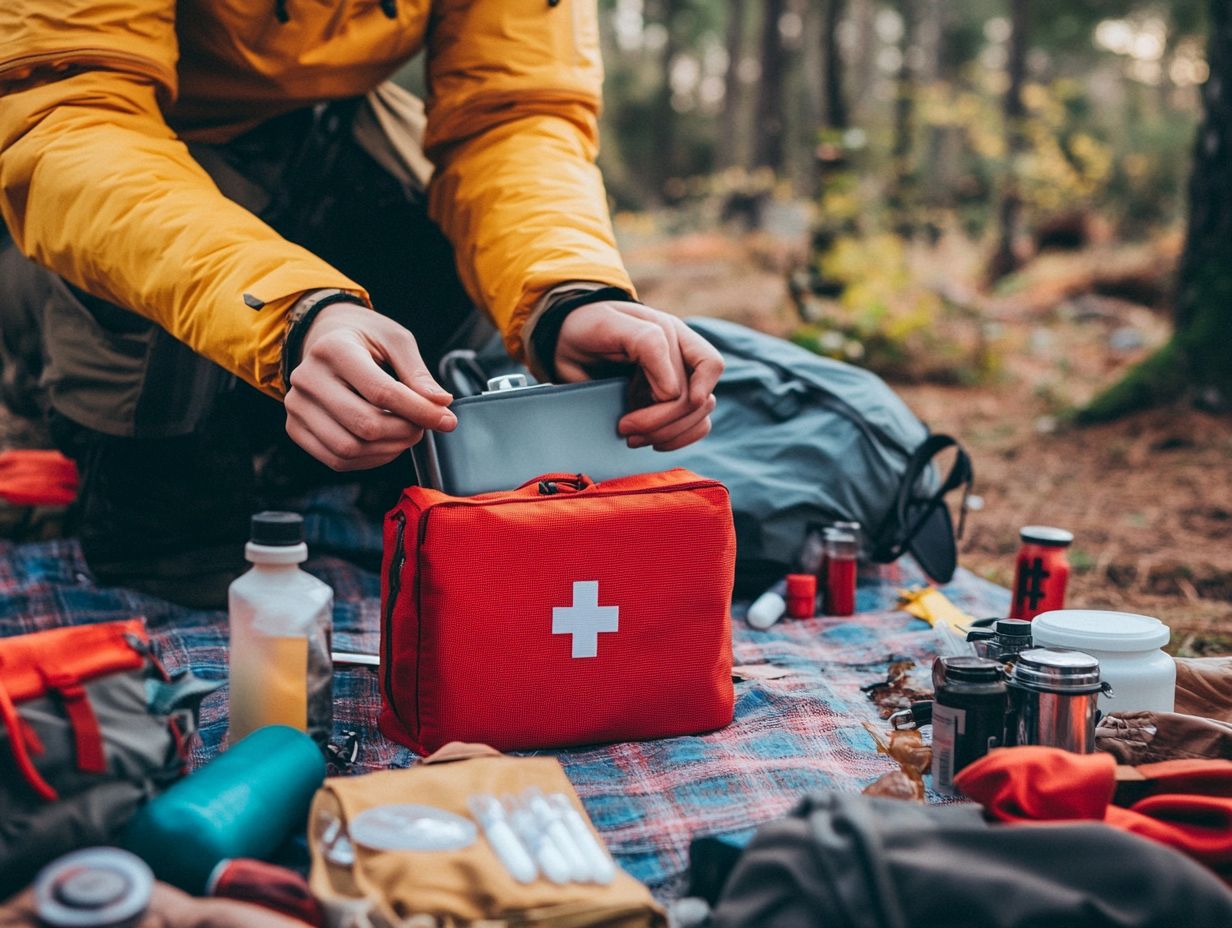
A first aid kit is a collection of essential medical supplies and equipment used to provide immediate medical assistance in case of an emergency. Having a first aid kit during outdoor activities is a must! You never know when you might need it.
What are some essential items that should be included in a first aid kit for outdoor activities?
Be sure to include these essential items in your first aid kit: bandages, gauze pads, adhesive tape, antiseptic wipes, pain relievers like Ibuprofen and Acetaminophen, scissors, tweezers, and any necessary personal medications. It s also helpful to include a first aid manual and emergency contact information.
How should the first aid kit be organized and stored during outdoor activities?
The first aid kit should be organized and stored in a waterproof container or bag to protect its contents from rain, moisture, and other elements. It should be easily accessible and kept in a designated spot, like a backpack or a first aid kit pouch, for quick access in emergencies.
What are some common injuries that can occur during outdoor activities and how can a first aid kit help?
Common injuries during outdoor activities include cuts, scrapes, bruises, sprains, and insect bites. A first aid kit can provide the necessary supplies to clean and dress wounds, reduce pain and swelling, and protect against infection. Know how to handle specific injuries like snake bites. Understand conditions like low sodium levels. It s wise to have medications like Benadryl for allergic reactions.
How often should a first aid kit be checked and restocked?
A first aid kit should be checked and restocked regularly, at least every 6 months, to ensure that all supplies are in good condition and not expired. Also, prepare before your trip to ensure you have all essential first-aid supplies for your adventures. Check and restock after every use, especially if you ve encountered injuries that require items like Savlon or an emergency blanket. This ensures the kit is ready for your next outdoor activity.
Get your first aid kit ready today and explore the outdoors safely!
What are some tips for using a first aid kit during outdoor activities?
Know what s in your first aid kit and practice basic first aid techniques. Always be ready for emergencies by keeping your kit close and knowing where to find help.
Be prepared by carrying your Outdoor First Aid kit with you at all times. Familiarize yourself with nearby medical facilities, such as REI or local health centers.

